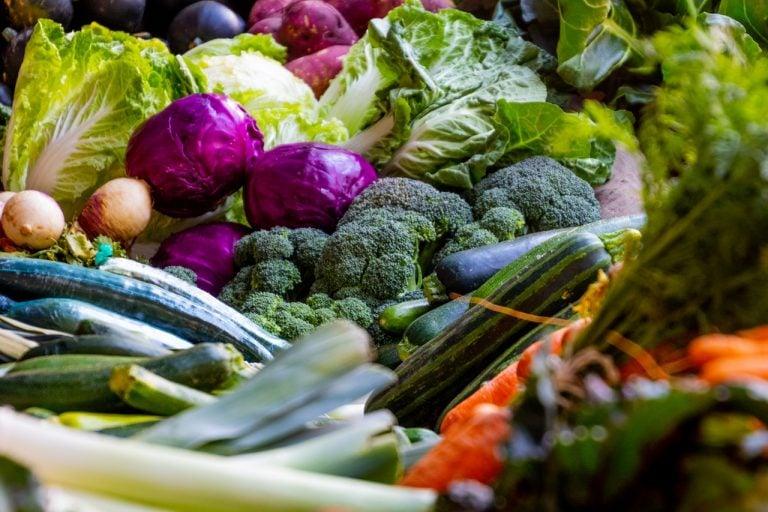The new Canada Food Guide highlights the biggest obstacle to healthy eating—poverty
Opinion: The nutritious diet recommended by Ottawa is out of reach for millions of Canadians. The next, obvious steps are decent living wages and fairer social benefits

(Pexels)
Share
Nick Saul is the president and CEO of Community Food Centres Canada, a national non-profit that works to build health, belonging and social justice to low-income communities through the power of food
Every day I think about who’s not eating in this country. The number is in the millions—nearly 13 per cent of our neighbours. The facts are hard to digest. Thirty-one per cent of single mothers are missing meals so their kids can eat. One in six children are living in households that can’t afford to put supper on the table. The situation is even more dire in the north: 55 per cent of Inuit living in Nunavut struggle with food insecurity. Hard to imagine this reality co-existing with the neighbourly compassion we pride ourselves on, and that runs deep in our country.
Do the math and you start to understand the anxiety and stress that low-income Canadians struggle with every day. According to 2018 Ottawa Health Unit data, a family of four on Ontario Works had $1,014 a month left to spend after rent. The cost of a nutritious food basket was $868, leaving only $146 to cover all other expenses, including transportation, clothing and utilities. Things are worse in Indigenous communities: in Attawapiskat, the cost of a nutritious food basket is $1,909 per month. No amount of creative budgeting can make that amount last until the end of the month. Food is often the first thing to go.
The health consequences of this massive vulnerability around food are severe. People who don’t eat regularly or are forced to eat the cheapest food available are some of the sickest in our country. Name the chronic disease—type 2 diabetes, heart disease, hypertension—and people living on low incomes are there in numbers that far exceed the national average. Diet-related diseases are the single biggest risk factor for death and disability in this country. They reduce quality of life and opportunity for millions of Canadians. They cost our health-care system $26 billion every year. And this massive health inequity diminishes us as a society.
Enter the new Canada Food Guide which, through its updated recommendations, aims to support people to live healthier lives. It’s an impressive document, and long overdue. The new guide provides evidence-based guidance for what to eat—more plants and plant-based protein, more whole grains, less sugar, less saturated fat—and also how to eat—at home, with others, with joy and pleasure. The addition of this social context is important—every day in our Community Food Centres we see the incredible power food has to bring people together. That Health Canada found the courage to create a document that thinks of food as more than just a collection of nutrients, and that puts public health ahead of private profit, is no small feat.
Now that we have smart guidelines on what and how to eat, though, the question we need to ask is who gets to put all this good research and thinking into practice. The answer, of course, should be everyone. But for those 13 per cent of food insecure Canadians, the guide’s recommendations are too far out of reach. The chronic insecurity they struggle with is caused by deep poverty and inequality—it’s not something that just pops up when the price of cauliflower spikes. And it’s in responding to this crisis that our next show of courage is needed.
We must find a way to channel the noise and interest generated by the arrival of the new food guide into a re-energized conversation about how to ensure that every Canadian has enough money in their pockets to make the food choices that are best for their health and the health of their families.
How do we get to a table where no one is excluded? We need to eliminate poverty. We need all levels of government to find the will to establish social and economic programs and benefits that allow people to live healthy and productive lives. We need to increase social assistance rates so people don’t have to choose between paying rent and buying food. We need to strengthen labour laws and increase the minimum wage so people aren’t going from work to the food bank. We need to expand tax credits like the Canada Child Benefit to give every child a fighting chance at a healthy future. We need to continue to investigate the possibility of universal benefits like a basic income that would establish a floor that no Canadian can fall below, especially needed in these quickly changing times.
RELATED: A reality check on the debate over regulating food marketing to kids
But eliminating poverty isn’t just up to government. We also need to have a new conversation about our economy. We need greater corporate leadership around implementing stronger labour standards and embracing ideas like a living wage. The best corporate social responsibility strategy a company can have is one that starts with good jobs, fair work practices, and adequate compensation.
And, most importantly, we need caring Canadians to fiercely say that now that we have an evidence-based guide to tell us what we should be putting on our plates, we need to make sure everyone can put those plates on their tables. It’s time for our public policies and our bottom line focused—economy to catch up with our compassion for others.